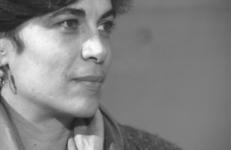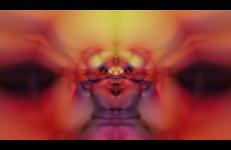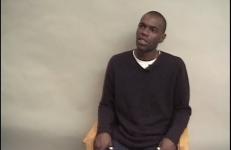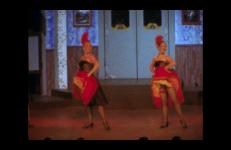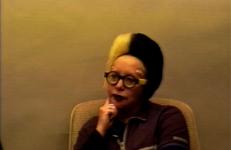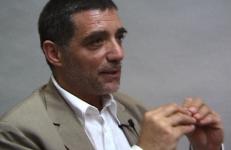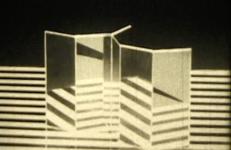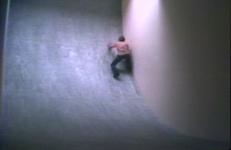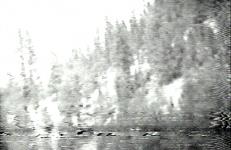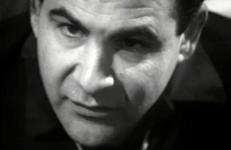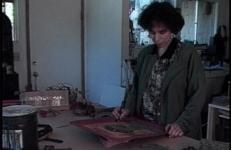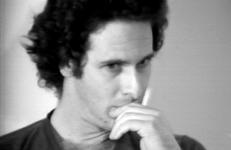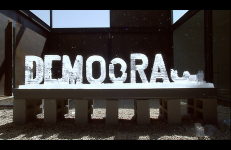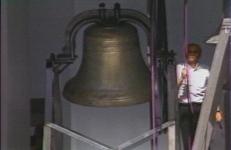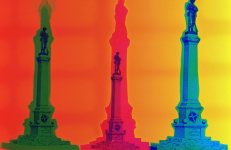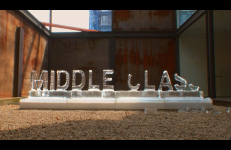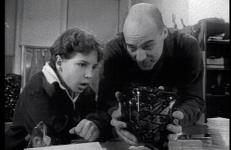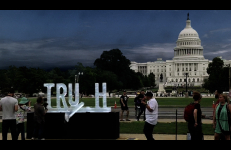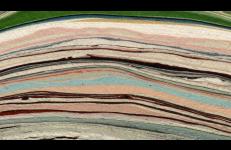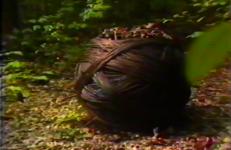Performance artist/sculptor Ana Mendieta used the raw materials of nature: water, mud, fire, rock, and grass. The consciousness of her politics and the poetics of her expression fill her work with an emotionally charged vision that is powerfully conveyed in this posthumous video profile. Drawing upon the raw spiritual power of Afro-Cuban religion, Mendieta used her art as a ritualistic and symbolic activity to celebrate the forces of life and the continuum of change.
Sculpture
Performance artist/sculptor Ana Mendieta used the raw materials of nature: water, mud, fire, rock, and grass. The consciousness of her politics and the poetics of her expression fill her work with an emotionally charged vision that is powerfully conveyed in this posthumous video profile. Drawing upon the raw spiritual power of Afro-Cuban religion, Mendieta used her art as a ritualistic and symbolic activity to celebrate the forces of life and the continuum of change.
Mary Miss (b.1944) is an American environmental artist who works with concepts of illusion, distance, and perception. Her site-specific work frequently uses both ancient and modern architecture as references. Miss's 1977 installation Perimeters/Pavilions/Decoys at the Nassau County Museum of Art, served as one of Rosalind Krauss's inspirations when she defined postmodern sculpture in her article, "Sculpture in the Expanded Field."
Nebula is a hallucinogenically immersive spectacle: a complex, long-form audio-visual composition, which pays playful homage to science fiction fantasies. Captured for video by means of stop-motion photography, objects made of glass, glitter and tulle, are nestled within a kaleidoscopic flow of computer-generated imagery. Drawing from Thomas Wilfred's Clavilux color organs as well as experimental abstract filmmakers such as Mary Ellen Bute, and James and John Whitney, Nebula also recalls liquid light shows and the marvelous sightings of the Hubble Space Telescope.
Nebula is a hallucinogenically immersive spectacle: a complex, long-form audio-visual composition, which pays playful homage to science fiction fantasies. Captured for video by means of stop-motion photography, objects made of glass, glitter and tulle, are nestled within a kaleidoscopic flow of computer-generated imagery. Drawing from Thomas Wilfred's Clavilux color organs as well as experimental abstract filmmakers such as Mary Ellen Bute, and James and John Whitney, Nebula also recalls liquid light shows and the marvelous sightings of the Hubble Space Telescope.
In this 2004 interview, Kori Newkirk (b.1970) describes his lifelong apprehension of being rooted in any one place for too long. Asserting that the School of the Art Institute of Chicago was the fifth school he attended in four years, Newkirk begins by describing the fortuitousness of his relocation to Chicago following his expulsion from Cooper Union. Recounting how he fled from the fiber department in favor of painting, Newkirk details how it was a studio visit from Deborah Kass and an exchange program to England that crystallized his burgeoning ideas about “painting without making paintings.”
The urge to relieve a winter valley of permanent shadow and find fortune in alluvial gravel are part of a long history of desire and extraction in the far Canadian north. Cancan dancers, curlers, ore smelters, former city officials and a curious cliff-side mirrored disc congregate to form a town portrait. Shot on location in Dawson City, Yukon Territory.
French performance artist Orlan uses her own body as a sculptural medium. Since 1990, she has worked on La Reincarnation de Sainte-Orlan, a process of plastic surgeries that she “performs,” making elaborate spectacles with surgeons dressed in sci-fi costumes and broadcasting the operations live via satellite to galleries worldwide. By exploring a total transformation of self, Orlan delves into issues of identity and the malleability of the flesh. She lives and works in Paris, exhibiting and performing internationally.
Interview by Shay Degrandis, via translator.
Spanish artist Jaume Plensa (b. 1955) creates sculptures and installations that intend to unify individuals through their relationship to memory, the body, and spirituality. Often referencing literature, psychology, biology, and history, his practice speaks of a shared humanity despite the world’s complexity. In this way, language acts as a metaphor, and the human figure a universal symbol. Plensa is perhaps best known for works that engage groups of people in public spaces.
On a gradually inclined plane, attempts are made to scale the rise, and rubber shoe marks leave evidence of the point where all of humanity fails.
This title is also available on Sympathetic Vibrations: The Videoworks of Paul Kos.
Originally part of a larger sculptural installation using prospector's tools, this tape reenacts the search for "Olga," a miner's wife who disappeared on her honeymoon in 1936. As Paul and Marlene Kos call out, "Olga... Olga...", the camera scans the Wyoming wilderness, and their search becomes ritualistic, the repetitive calls building in intensity and breaking down into chanted moans.
Joel Shapiro (b.1941) came to prominence in the early 1970s with his representational miniatures of everyday objects like chairs and houses. Since then he has become one of the most exhibited American sculptors. Shapiro’s vocabulary consists largely of rectangular volumes, with which he has created a body of work dancing on the line between abstraction and figuration. The human form has been a major theme in Shapiro’s geometric expression.
This tape profiles mother and daughter artists Betye and Alison Saar. Both artists work with sculpture and installation, frequently using found objects, wood, and sheet metal to evoke sacred African-American rituals and images. Similar Differences was produced in concert with their first collaborative exhibition in a decade, Secrets, Dialogues, Revelations, which opened at UCLA’s Wight Gallery in January 1990 and toured nationally in 1992.
Charles Simonds (b.1945) majored in art at the University of California at Berkeley. There he discovered an area of clay pits that had once provided the raw material for some of Manhattan's older buildings. He literally immersed himself in the subject, burying himself in a pool of wet clay to get a feel for the material. Simonds's sculptures are enchanting architectural minatures. Most are landforms with small chambers and towers; some are abstract organic shapes. Carefully built brick by tiny brick, Simonds's sculptures engage the child in everyone.
The State of Things documents the melting away of Democracy in 2006 on the third anniversary of the Iraq War. The sculpture was installed at Jim Kempner Fine Art in New York City and disappeared over a period of 26 hours.
Voiceover: George W. Bush
Subsequently Ligorano Reese installed the sculpture at MCADenver and the Minnesota state capitol in St. Paul during the 2008 political conventions.
Ice Sculpture by Okamoto Studio
Twelve church bells are rung daily for 30 days in a sculptural setting at the Capp Street Project in San Francisco. Ringers progress from practice sessions on beer bottles to a full-scale ring.
This piece was shot using a combination of 3/4" U-matic video plus Hi8 video.
This title is also available on Sympathetic Vibrations: The Videoworks of Paul Kos.
Statement
A last stand for the silent guardians of the old order. Take It Down is a filmic day of reckoning for the Old Confederate South. What is up must come down, like the Confederate soldier monuments standing in court house squares across the South. At long last, a grand inversion! Solarized film makes positives bleed into negatives. The South is renewed.
This film looks to North Carolina to describe the cultural fissure that runs through the South, a legacy of the Civil War. In the context of the divisive Trump presidency and the increasing visibility of white supremacist activism, these Confederate memorials have become sites of conflicting politics and historical narratives.
Historians agree that a majority of Confederate statues were erected as propaganda tools legitimizing racism in the era of Jim Crow laws. For example, “Silent Sam”, a statue depicted in the film, was erected on the quad of the University of North Carolina campus. In an act of civil disobedience in Fall 2018, students and protestors tore down the statue in a statement against white supremacist oppression.
In 2011 as the Congress debated the budget, Ligorano Reese installed an ice sculpture of the words Middle Class in the garden of Jim Kempner Fine Art. They filmed this timelapse of the sculpture disappearing using Senator Bernie Sanders' filibuster against the Bush tax cuts as a soundtrack with music by Michael Galasso. Senator Sanders featured it on his Senate homepage.
Ice Sculpture by Okamoto Studio.
Modeled after NBC’s long-running science program Watch Mr. Wizard, this tape features Torreano as Mr. Wizard instructing a skeptical boy on how to build a diamond out of pieces of wood. The boy remains unimpressed until Torreano uses a “video paintbox” to create flashy special effects. Painter John Torreano’s use of galaxy clusters as a reference for his fake jewel studded canvases and diamond-shaped sculptures suggested the nostalgic format of this video profile by MICA-TV.
On September 22, 2018 artists Ligorano Reese installed a 2500 pound sculpture of the word Truth carved in ice on the National Mall in front of the U.S. Capitol.
This time lapse video is compiled from over 8 hours of footage. The soundtrack includes Donald Trump over the past 2 years on the Russia investigation and obstruction of justice.
Editing: Marshall Reese & Nora Ligorano
Music composition and performance: Leo Wexler-Mann
Audio Mix: Bill Seery
Rotoscope: Shannon Lee
Colorist: Gavin Guerra
Ice: IceLab, Baltimore MD
The discovery of a VHS tape of the artist’s films for sale on eBay triggers obsessive speculation about the seller’s identity.
Sculptor Jackie Winsor creates large-scale constructions in wood, fiber, twine, and wire. Recent works are subjected to explosions and fire. Winsor lives and works in New York City. Interview by Kay Miller and Albert Alhadeff.
This is a three-part tape shot in 1975, ’76, and ’78 as Winsor was working on three pieces: 50/50, Copper Piece, and Burnt Piece. The rhythms and rituals of her working process as well as her comments on the work are documented. Part III is the only filmic record of the final stage of construction of Burnt Piece.
In this tape made shortly after fiber and sculpture artist Claire Zeisler’s death, art critic Dennis Adrian discusses her influence and aesthetic strategies. Adrian’s commentary is intercut with images of her work and archival footage of an interview with the artist.





